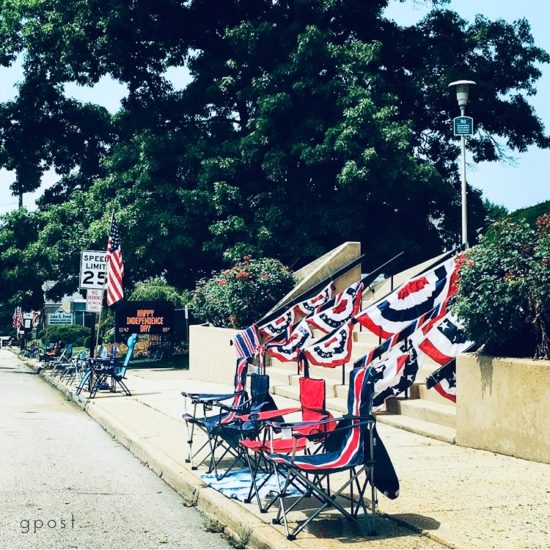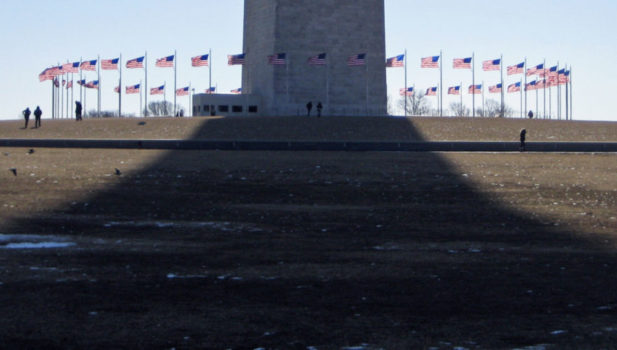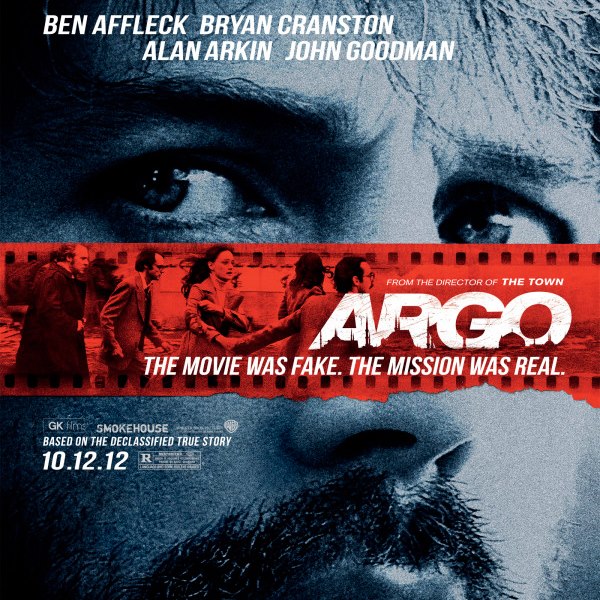
I took this photo on the Fourth of July in Glenside, a town just outside of Philadelphia. Its citizens had set out chairs, waiting for a parade to honor a struggle that began in revolution but seems to have lost its momentum today.
Looking back at past newsletters and from them, even farther back in my life and my parents’ lives, I was surprised by how much I’ve been thinking about the future this year. It wasn’t my original intention.
I guess I’ve become convinced that the deep-down quality of the present isn’t the same as it seems on the surface—that the core I remember has been hollowed out—and that what’s coming next may shatter the illusion that the party we’ve been enjoying in spite of it will go on forever. Still, there is no denying that the party has been pretty grand while it’s lasted, a place to enjoy ourselves amidst all the comforts of home.
In our lifetimes and our parents’ lifetimes, America sold the Dream of sunny, middle-class home ownership, consumerism, material comfort, and upward social mobility that it thought it needed to reward its WWII veterans and win the ideological battles of the Cold War. (Our kitchens are nicer here than they are in Moscow.) Madison Avenue’s advertising machine helped with the sales pitch, and today we’ve not only won these wars but continue to live the Dream we were supposedly fighting for. And let’s face it, that American Dream has been delivered to many, if not most of us despite our rising income inequality, our concern that our kids may end up with “less” than we have today, and our shabby public infrastructure.
Of course, Edmund Phelps’ “mass flourishing” has been tapering off since the 1970’s (my 11-25-18 post) and our safety nets are fraying, but even the poorest neighborhoods have wide-screen TVs, smart phones, and more than their pets could ever want or need. So why, amidst all of this plenty, are we wondering: “Is that all there is?” Is that comfortable surface all that we’re working for? Living for?
Maybe some of the uneasiness is recalling—on some level—that we once had more ambitious dreams than getting the latest gadget from Amazon delivered in an hour, binge-watching another series on Netflix, or pleasuring ourselves with the latest meme on Facebook. We’ve either heard about or actually remember a time when the American Dream was much bolder than the warm bath we’re sitting in today—and that those more vital days weren’t so long ago.
In his 1999 book For Common Things, Jed Purdy recalls the transformative political climate of The Great Society of the 1960s where America debated ways “to eliminate” inequalities based on race and “to wage a war” on poverty. A half-century later, that debate has been reduced to “managing” the poor with welfare programs and racial inequality with good intentions. Looking at the diminishment of our public aspirations, Purdy argues that:
Americans who came of age after 1974 have never seen the government undertake a large-scale project other than highway maintenance and small wars, and relatively few are inspired by the idea that it should.
Of course, state-engineered income and racial equality would likely interfere with the mass flourishing of Phelps’ more individualistic and entrepreneurial economy. But what may be most noteworthy about where we find ourselves is the absence of any serious debate—really any tension at all—between the basic problems we face and the different ways we could solve them. This acceptance of “the way things are,” along with our sedating comfort, are the principal reasons that the American Dream has become “fossilized” and needs to be reimagined. Very little of it still resonates with any of us at its core.
Behold America: A History of America First and the American Dream by Sarah Churchwell ends with that argument. But before getting to its conclusion, most of her new book is about returning to the newspapers, speeches and other original sources over the past 150 years to identify “the gaps” between “what we tell each other that history shows and what it actually says” about the quality of the American Dream.
While Churchwell finds plenty of evidence of darkness in our nativism, racism, and materialism, the forces of light have nearly always shined brightly in our history as well. In the five years between 1915 and the end of the Great War, America rocked between an isolationist, America-First agenda to making the world safe for democracy on the battlefields of Europe and trying to create a new League of Nations. Before and after the Civil War, during the Gilded Age of business monopolies and mass immigration, and during the Great Depression some of our most selfish tendencies as a nation were in pitched battles with champions of social justice and “principled appeals for a more generous way of life.”
Through much of our history, there has always been a push and pull that defined the American Dream for the generations that were trying “to make it” here—at least until fairly recently. It’s the long stretch since the Great Society of the 1960s to the present that Churchwell is most worried about.
According to the historical record she has unearthed, the America that is reflected in its Dream has “diminished,” and the fact that we once “dreamed more expansively” has been “obscured.” As she eloquently argues, “if even your dreams are ungenerous, then surely you have lost your way.” In its 300+ pages, Behold America demonstrates how a “rich, complex, difficult dream” has been forgotten in a race that focuses on wealth, material comfort and disengagement from a broader struggle for America’s soul. For Churchwell, the time to re-energize a Promise that once motivated us as workers, as citizens and as a nation is now.
So why aren’t we doing so? Churchwell doesn’t say, but I’ve tried to offer some explanations here over the past several months—at least for our personal reluctance. Beyond disengaging from any notion that sounds like rally-around-the-flag or that asks us “to believe in something” instead of remaining at a cynical distance, preoccupation with our comforts and “the rush of the future” leave little space for the kinds of activism that challenged America’s worst tendencies in the past.
Almost a year ago (in my 1-7-18 newsletter), I quoted from a Roxane Gay essay about “the tiny house movement” that quickly turned from playful to serious regarding the promises that we make to one another.
When we talk about the American dream, we never talk about what that dream costs. We never talk about how so many Americans are one financial crisis away from losing their savings or their homes. And we don’t talk about how the American dream should not be grounded in material things like large homes or fancy cars rather than, say, single-payer health care, subsidized childcare, or a robust Social Security system.
We don’t talk enough about what should and shouldn’t be included in the American Dream and spend even less time acting on our convictions. Perhaps there’s not enough hope that anything we do will matter. But believing in our priorities enough to act on them always matters. As John Berger says in my post last month about the rescuers after the Paradise California fire, hope is the fuel, the “detonator of energy,” that drives us to act on our convictions. A dream, the American Dream, is just a good story that embodies those hopes.
I mentioned several reasons why the fuel line between hope and action gets clogged in another post last August.
The Future Is Coming At Me Too Fast to Do Anything Other Than Meet It
Whole industries can change in a heartbeat. Think local travel (Uber, Lyft). Remote travel (Airbnb). Outside shopping (Amazon). Personal transport (self-driving cars). Our phones change, the apps on them change, how we use them and protect them changes. We’re so busy keeping up with the furious pace of change, we can’t think about any future other than the leading edge of it that we’re experiencing right now.”
I’m Too Absorbed By My Immediate Gratifications To Think Long-Term
The addictiveness of social media. The proliferation of entertainment to listen to, watch, and get lost in. The online availability of every kind of diverting information. A consumer economy that meets every real and imagined need for those who can afford it. We move between jobs that fail to engage us to leisure time that gratifies us into a kind of torpor. We’re too sedated by the warm bath we’re in now to worry about a future that hasn’t arrived yet.
My General Laziness and Inertia
And not just during the dog days of August….
The only way to overcome these obstacles is by finding enough hope to want to demonstrate our capabilities and act on our generosity once again.

In his poem the Hollow Men, T.S. Eliot described the moral emptiness that seemed to him to envelope everything in the wake of World War I. What he wrote then is not so different from where we find ourselves today.
Between the conception
And the creation
Between the emotion
And the response
Falls the Shadow
The July 4th parade in Glenside aimed to celebrate what we’ve “created” and how we’ve “responded” to our challenges as a nation but it has fallen into Shadow. In our jobs, as members of a community and as citizens, the only way out of the Shadow is to “respond” once again to priorities that are bigger than our comfort or cynicism and to “create” an American Dream that is worth living in again: one capable and generous step at a time.
This post is adapted from my December 23, 2018 newsletter.







